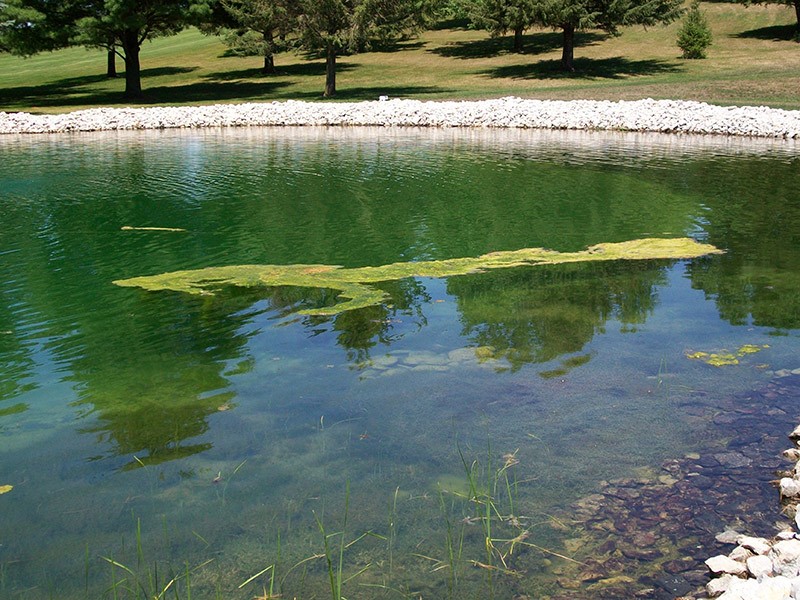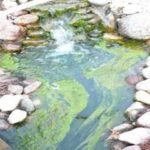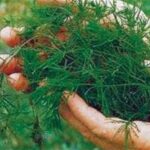Whether you own property with a pond or you are tasked with pond management at a golf course or public area, learning about the different types of pond algae and algae control is important. At Healthy Ponds, we can help you find easy-to-use, effective pond algae control products as well as helping you identify algae and other pond nuisances, such as weeds.
If your pond water emits an unpleasant odor, has an odd pea soup green color or the surface of the pond is covered or partially covered with floating green organic matter, algae are the likely culprit. It is important to know a bit about different types of pond algae because the strategies for pond algae control differ depending on the organisms in your pond so let’s take a look at the different algae you might encounter in your pond.
Filamentous Algae


There are more than 150,000 known types of algae, but pond owners thankfully need only worry about a few of these types. Filamentous algae are stringy and look almost hair-like. Ponds often become heavily matted with filamentous algae. It begins to grow either on the bottom of a pond or on rocks but eventually floats to the surface.
If your pond has small amounts of filamentous algae, this usually is not a problem. However, it can grow quickly and cover too much of the surface area of your pond. You can rake out small amounts of the algae, but in some cases, using a copper algaecide can be your best option.
Planktonic Algae
There are several types of planktonic algae that you might find in your pond. Chlorella and Closterium, for instance, are very common. These types of algae are microscopic, and, in small amounts, they can be beneficial for your pond. However, any type of pond algae can grow out of control quickly if the right conditions are in place, so if you notice that your pond water’s color is shifting to green, brown or even red, this probably is due to planktonic algae. This change can occur quickly in what is known as an algal bloom.
Muskgrass/Chara
These multi-cellular algae often are mistaken for a plant, but it is a type of algae. It e mits a foul odor, which is why it is known as muskgrass. These algae can be raked or skimmed out of a pond, but if any of the pieces of Chara are left behind, they can reproduce quickly. Pond algae control products, such as a chelated copper algaecide, can be a good way to eliminate Chara as well as other types of algae.
mits a foul odor, which is why it is known as muskgrass. These algae can be raked or skimmed out of a pond, but if any of the pieces of Chara are left behind, they can reproduce quickly. Pond algae control products, such as a chelated copper algaecide, can be a good way to eliminate Chara as well as other types of algae.
Blue-Green Algae
While these are commonly called algae, blue-green “algae” is actually a type of bacteria known as cyanobacteria. These typically form in shallow, warm water, particularly during the warmest months of the year. This bacteria can produce a toxin known as microcystin, which can be harmful to fish, wildlife, pets and even people.
Blue-green algae/cyanobacteria can produce a pea soup color in your pond, but this also can be due to planktonic algae. You might see a bright green color or bluish-green dots in the water, as well. You won’t be able to rake this bacteria out of a pond as you could with filamentous algae or Chara or pond weeds.
Unfortunately, it can be hard to pinpoint this pond bacteria and the best thing to do would be to contact an expert to ensure that it is blue-green algae and provide you with recommendations to remove this potentially dangerous bacteria. Often, a product such as SePRO’s Captain (a copper algaecide) can be the best solution for this problem.
What Causes Algae To Grow?
Learning what causes pond algae problems is just as important as learning how to control pond algae. Generally, algae multiply in water systems with an overabundance of nitrogen and phosphorus. This can be caused by runoff from a lawn treated with pesticides, as well as from animal waste, including fish and livestock. A buildup of nitrogen and phosphorus can promote the growth of pond algae and many types of pond weeds, and this will lower the oxygen levels in your pond water.
Additionally, warm water temperatures can cause oxygen levels in your pond to drop, and algae love sunlight. They absorb nutrients from sunlight, and this transfers solar heat into your pond water. Oxygen levels also can be affected by a large rain event or an overabundant fish population. We recommend that you test the oxygen levels in your pond often, especially if your pond is stocked with fish.
How To Prevent Algae Growth
There are several ways to prevent excessive algae growth. Creating a barrier of beneficial plants around the shoreline can help block runoff, and it also is recommended that you don’t treat the area around your pond with fertilizers that contain nitrogen or phosphorus. Collecting and disposing of grass clippings also can ensure that grass stays out of your pond.
If your pond is stocked with fish, keep an eye on your fish population. If your pond has too many fish, this forces them to compete for oxygen and they will produce too much waste, which also reduces oxygen levels. Talk to a fish expert and ensure that you have a manageable number of fish for your pond’s size and depth.
If you notice that fish aren’t eating or they are popping up to the surface for air (especially during the early morning or at night), this is a sign that you need to take action to avoid fish kills, which can happen very quickly.
Treating your water with beneficial bacteria also can help prevent the rapid growth of floating green organic matter. These bacteria consume excess nutrients in your pond, which can prevent many common pond issues. We have products meant to be used monthly as a preventative measure (AquaSpherePRO®) as well as products that can be used for special circumstances.
For instance, at the start of your warm season or perhaps when the temperatures suddenly spike, we recommend adding Natural BLAST® along with the AquaSpherePRO®. Natural BLAST® also can be added after a significant rain event or wind event, and this beneficial bacteria product works similarly to AquaSpherePRO®, consuming excess nutrients before they can cause problems.
Installing an aeration system also can help keep water temperatures down, and you also can include a filtration system to remove excess animal waste and other debris. This can help prevent a stagnant pond. Generally, a bottom diffusion system is the best option as these tend to be more powerful and can better circulate and aerate the water at the bottom of your pond. Talk to a pond expert before installing an aeration system to ensure that you select the best unit for your pond.
Of course, if you already are having issues with pond algae, we can provide you with pond algae control solutions. It is important to note, however, that customers should not confuse our chemicals with our all-natural products. Healthy Ponds’ natural products are not classified as algaecides or herbicides. We offer free personalized pond water treatment plans for any size water feature at https://healthyponds.com/free-pond-plan/. If you have any questions about our pond treatment products, don’t hesitate to contact us at any time.

